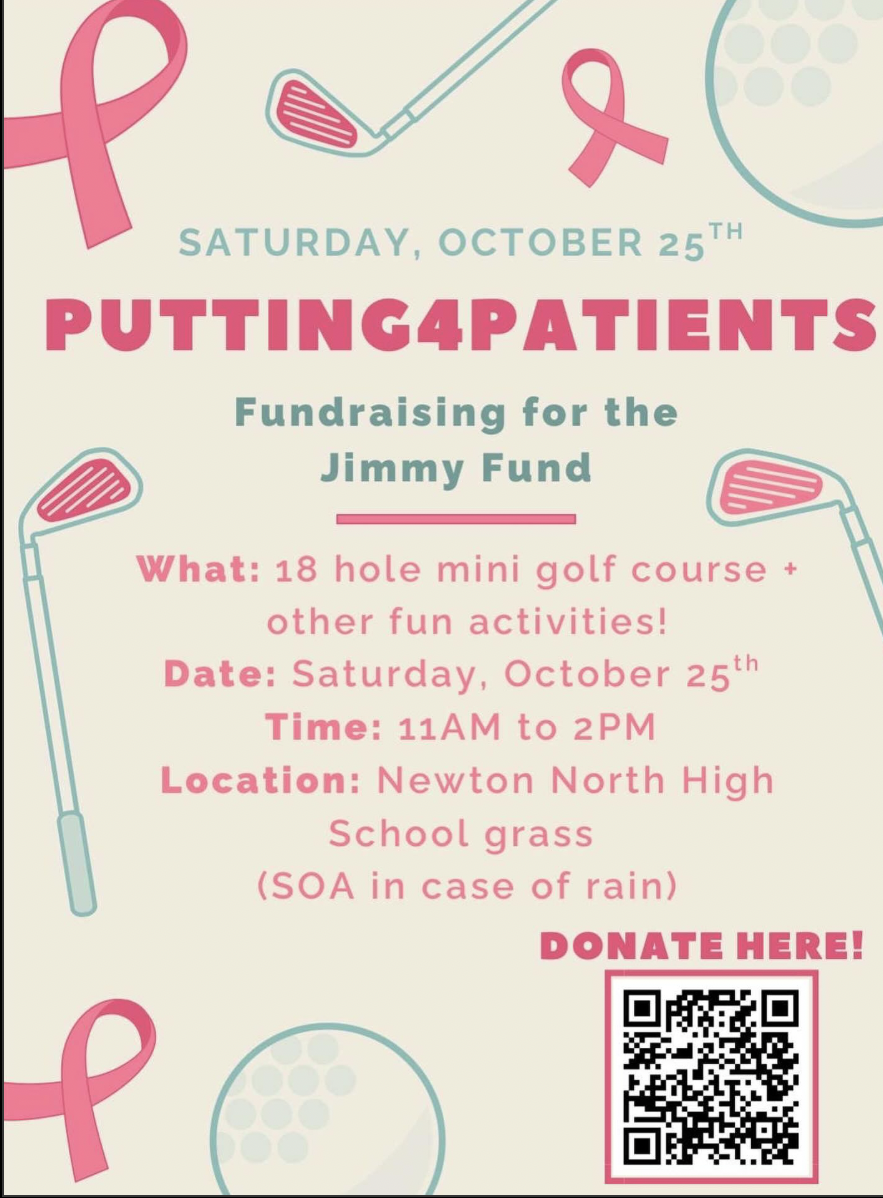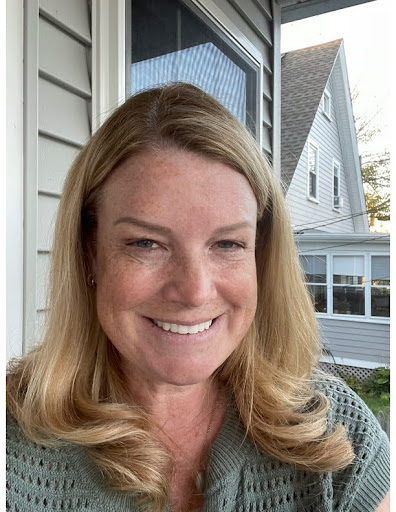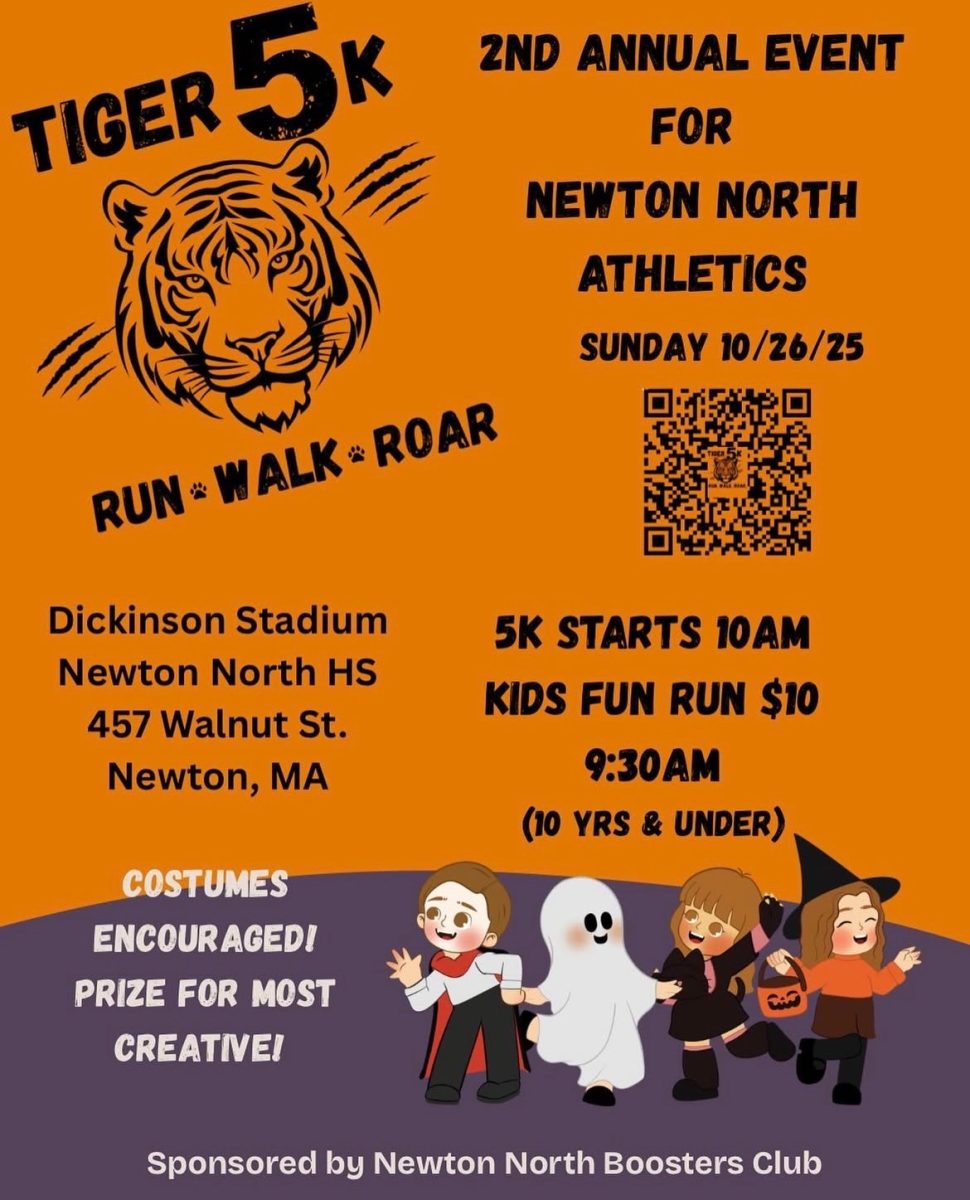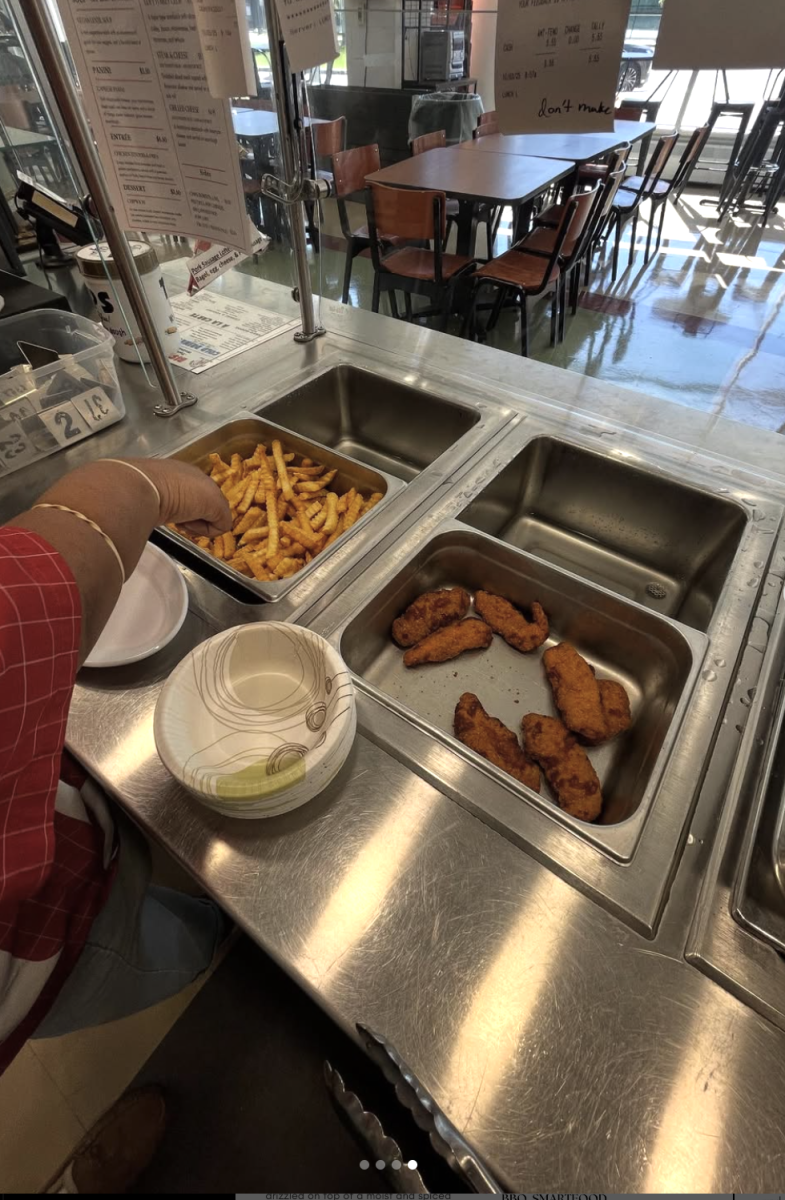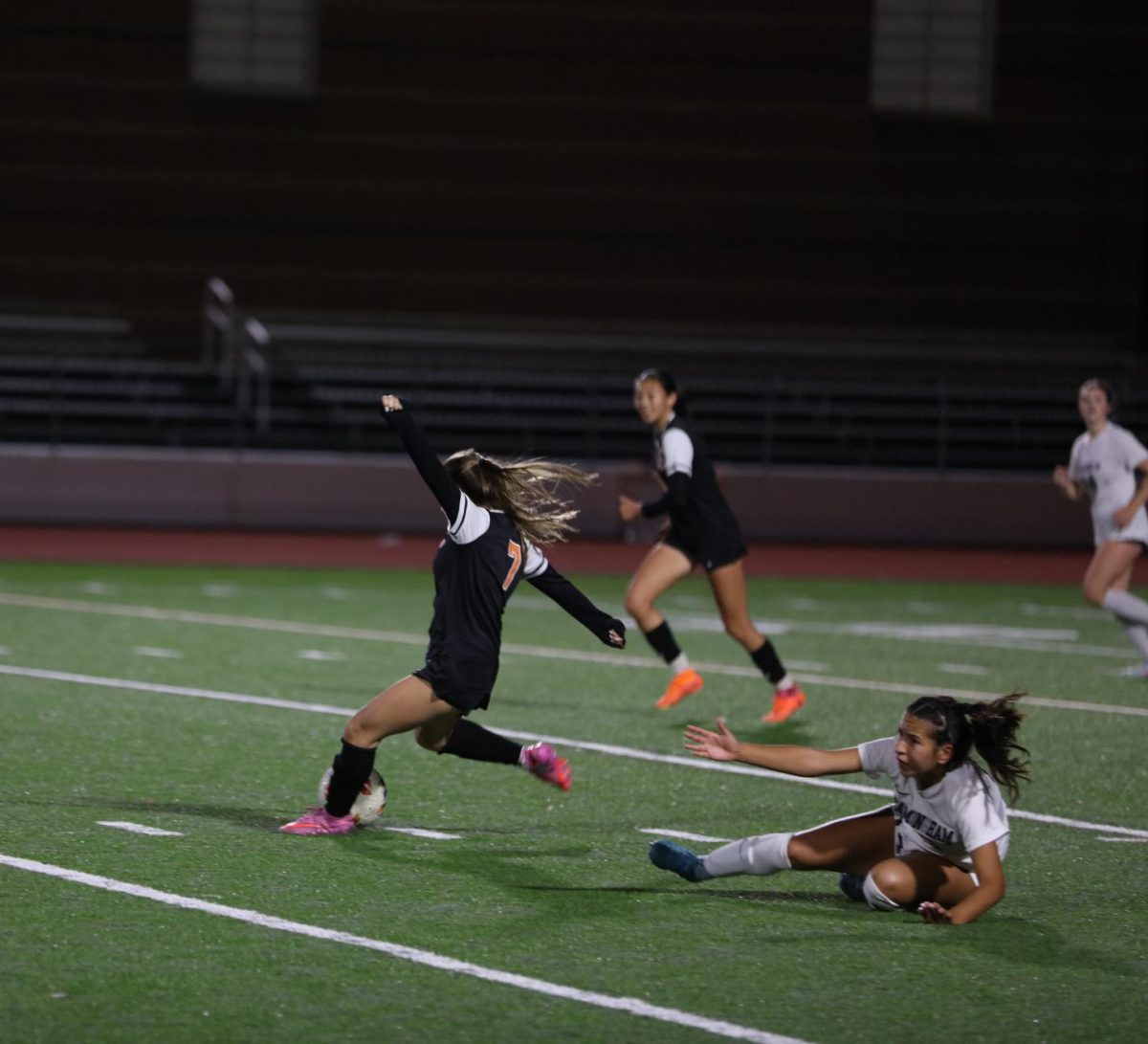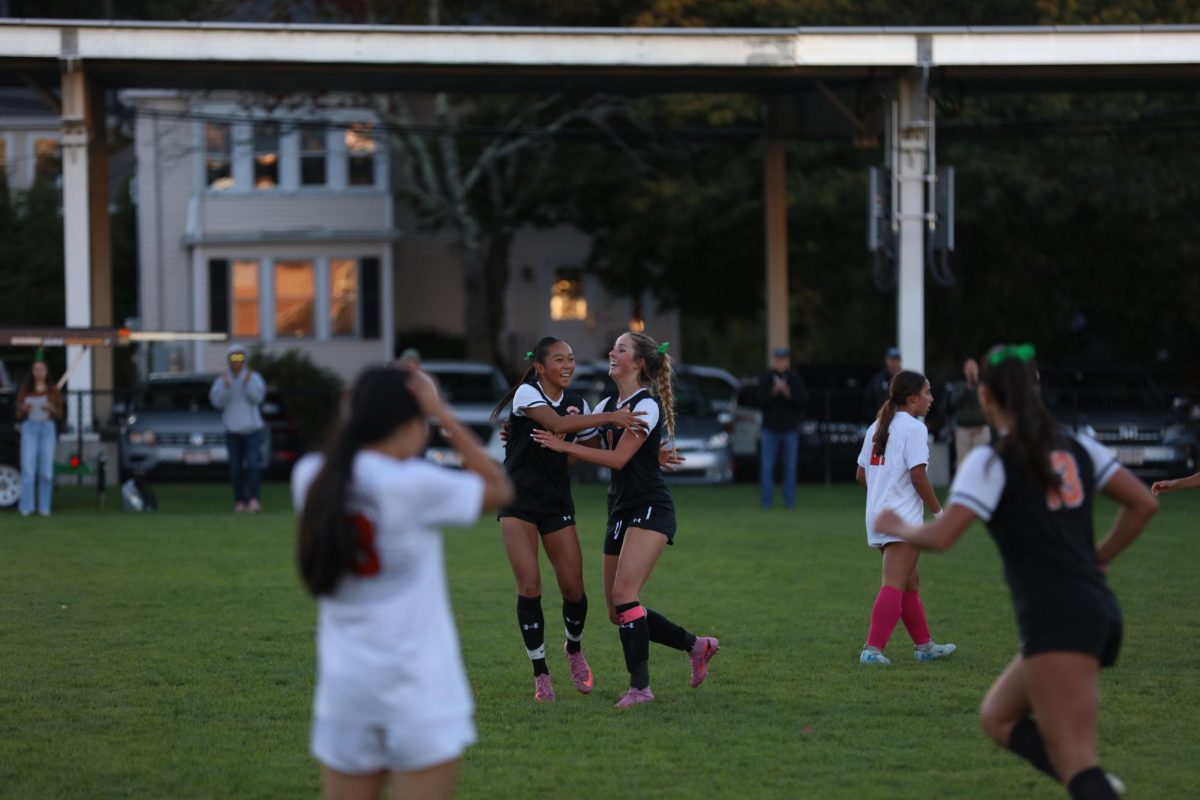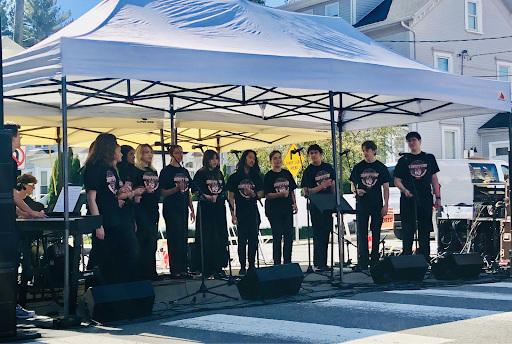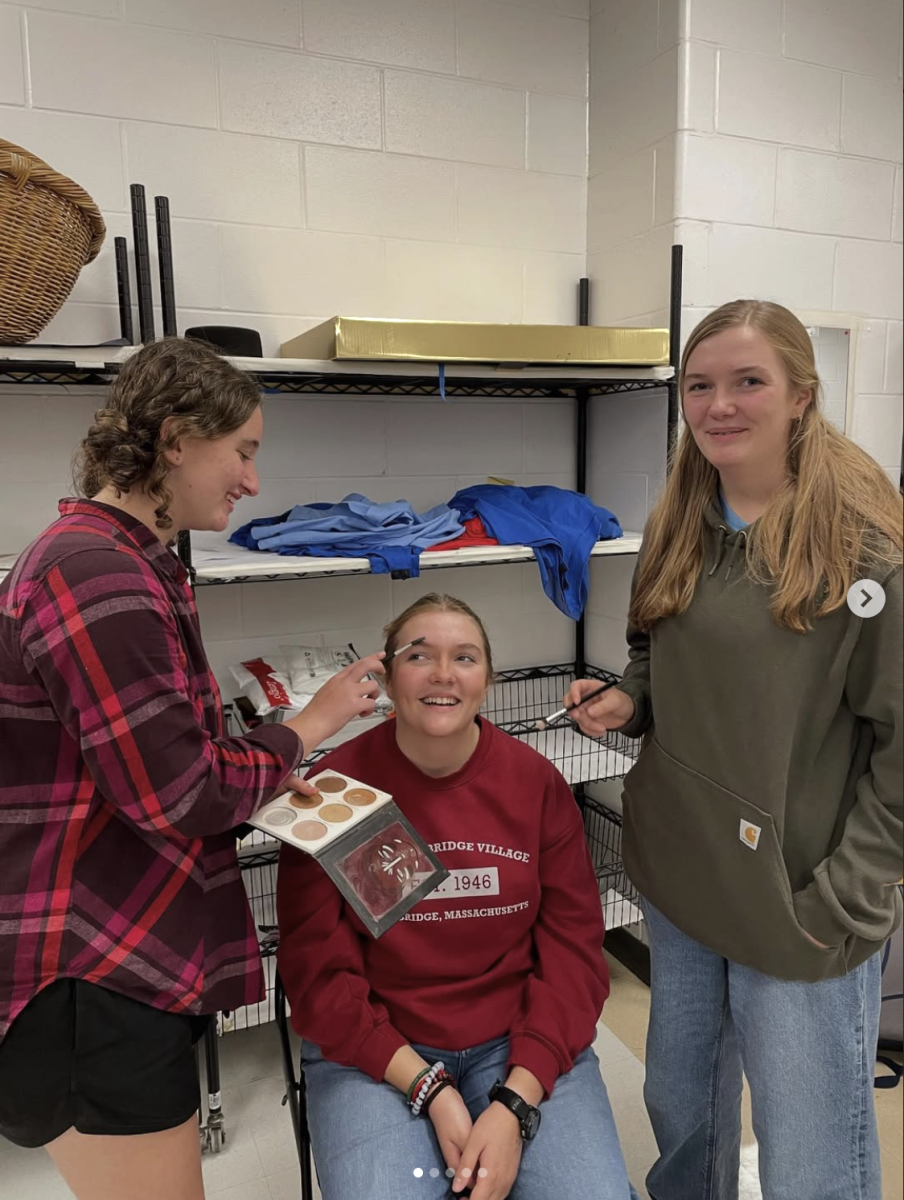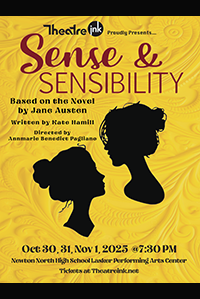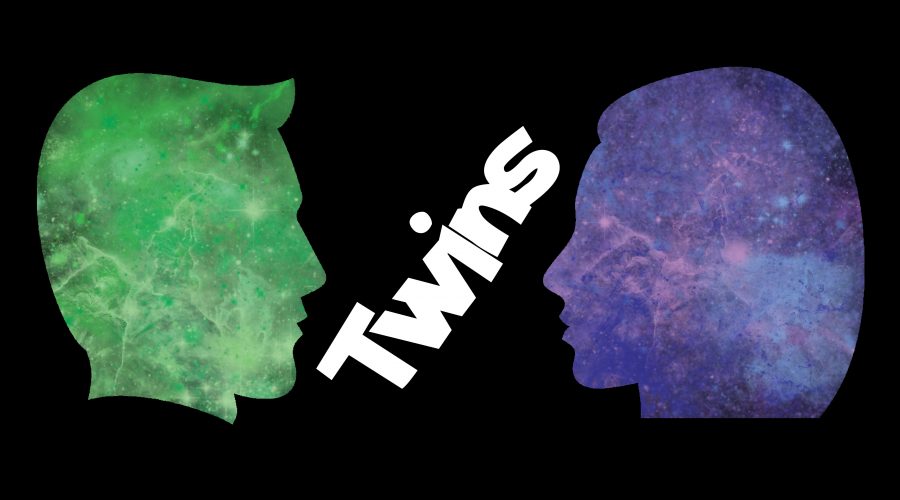
by Isabel Joyce
“What’s it like to have never travelled outside the country?”
“Do you miss the taste of meat if you’ve been a vegetarian your whole life?”
How could anyone possibly answer any of these questions when the base of the question relies heavily on the unknown?
So, although the hot topic on everyone’s lips when they meet a set of twins is “what’s it like having a twin?”, junior Naomi Forman-Katz, twin of Alison Forman-Katz, explains that that is simply “impossible” for her to answer.
“Asking ‘What’s it like having a twin?’ is like asking you what it’s like to breathe air—you wouldn’t know, because you’ve never lived without it,” she said.
[divider]Friends or Siblings?[/divider]
Despite all the connections and experiences twins share, whether or not you call your sibling your friend stands out.
Naomi considers Alison her friend, “if it’s even possible for your sister to also be your friend.” The twins get along better now compared to their childhood, and they share the same group of friends, making it “hard not to be friends.”
Alison takes a different angle, saying that if she and Naomi were not related, she would consider her a friend, but being her sister creates a barrier between friendship and sisterhood.
In elementary school and middle school, seniors Kat and Nick Hansell were extremely close friends, in addition to being siblings. In high school, however, the twins began to follow different paths and played the role of siblings as opposed to friends. Nick said that he realized, “I want to be my own person, and she wants to be her own person.”
[divider]Reading Minds[/divider]
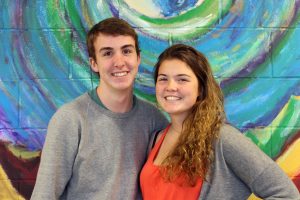
Following along the storybook myths and misconceptions on twins comes the fantastical myth of telepathy or the ability to feel the other twin’s pain.
“People have so many misconceptions about twins, it’s hilarious,” said Naomi, who’s been asked “in all seriousness” if twins can feel each other’s pain.
Identical or fraternal, the common misconception of ESP (Extra Sensory Perception) is just that, a misconception. Though not telepathic, twins may be exceptional at communicating without words, according to Naomi, who says that sometimes Alison will, “say something random, and I’ll be able to follow her exact train of thought to how she got there.”
“We always know what the other’s thinking,” said Kat, explaining that she and Nick communicate as if sharing the same mind.

Even though many of the misconceptions concerning twins prove false, twins do share certain connections, not because telepathy between twins actually occurs, but due to their similar childhood experiences.
According to Nick, he and his sister are “on the same page,” and that they “definitely have signals that [they] don’t really have to talk about.”
Kat said, “also, if you say a joke, I feel like I—”
“—you try and beat me to the punch,” Nick interrupted.
“—yeah, but you don’t need to say the whole thing, and I’ll get what you’re saying.”
The Forman-Katz twins (who “absolutely dominate at taboo”) have shared so many experiences, that they “think very similarly,” which gives onlookers the impression of communication without words.
“Alison and I have definitely experienced times where we both say the exact same thing at the exact same time, even in the same tone of voice. It’s almost a little scary,” said Naomi.
The unspoken communication and shared experiences contribute to the Forman-Katz twins’ ability to “work well together.”
Alison and Naomi share many common interests. However, they “hope to end up at different colleges” because the twins “definitely want some time apart.”
[divider]Identical vs. Fraternal [/divider]

“Alison and I are a little more alike than we’d like to think,” said Naomi. “We have similar personalities and interests, and definitely share the same opinions on most issues.”
The similarities between twins are sometimes mistaken for common twin misconceptions, however. Although some of these “misconceptions” appear to have some truth, many are not accurate.
“No one can seem to grasp the difference between identical and fraternal,” said junior Andrew Mannix, twin of Emily Mannix. “A boy and girl twin cannot be identical.”
Even though the question seems obvious to Andrew, when at work, people ask if he has any siblings and therefore discovered he has a twin sister. They then proceed to ask if his twin sister is identical, “and I’m like ‘no!’” he said.
Another misconception related to the identical/fraternal confusion is that twins have identical physical and personality features.
“As you can tell, we don’t really look alike at all,” said Nick, who also claims to have a more subdued personality compared to his outgoing sister.
[divider]Leaders and Followers[/divider]
The “older twin” often assumes the “leader” role in the leader/follower twin misconception, which appears to have been a more prominent trait when the twins were younger.
According to Nick, the leader/follower roles were especially prevalent in his childhood, with Kat being the older and more assertive of the two. He said that his twin, Kat, “acts like a second mom to me.”
At this, Kat laughed and said, “he calls me mom.”
“Asking ‘What’s it like having a twin?’ is like asking you what it’s like to breathe air—you wouldn’t know, because you’ve never lived without it,” Naomi said.
Misconception or not, Naomi claims to have taken the “leader” role, even though she is the younger twin. Naomi “tended to come up with the plans” in which her sister would “either agree or argue until they came to a compromise.”
“Being alive for two extra minutes does not provide any more wisdom or maturity,” Naomi (born two minutes after Alison) said. The question of “who’s older?”, although it seems of great importance, defeats the purpose of having a twin: there is no age difference.
However, when the twins were younger, Naomi was a few inches taller. Naomi said that, “people used to ask who was older, and I would say, ‘Well, Alison is two minutes older, but I’m two minutes taller!’ My parents eventually explained that minutes were not a measurement of height, but I always thought that sounded fair—she was older, and I was taller, so it evened itself out.”
[divider]Feeling Unique[/divider]
The different traits twins have, including “age difference,” may help a twin in feeling like his/her own person. According to sophomore Leanna Bellevue, identical twin of Gina Bellevue, who says that her older twin sister “tries to act older” even though there was just a minute difference.
For identical twins, one would think the battle to be identified as your own person would be a dominant issue, but for Gina, having an identical twin doesn’t make her feel any less unique.
“I don’t wake up and think ‘oh hey look its another version of me,’” said Gina, referencing her identical twin Leanna. The Bellevue twins also have a younger sister, and say that having an identical twin is no different than having another sister.
However the similarities in age occasionally coincides with putting on similar outfits in the morning, and then a rush to change, “because we don’t want people to be confused and it sucks when you are not recognized as your own person,” said Gina.
Confusing identical twins creates an awkward experience for both the twins and the other person, so both parties try and find ways to stray from that path. Some people find distinct physical features that differ between the twins, like “Gina’s beauty mark on her chin,” said Leanna.
The Bellevue sisters, who consider each other best friends, share the same friends, and claim that their friends “can tell us apart like my mom would—easily. They do not even have to think about it,” said Gina.
The twins have become used to the mixups. “It is normal to me when people get us confused, but to be honest, it does get annoying sometimes,” Gina said. “I wish people could figure it out,” said Gina.
Even for fraternal twins, such as Naomi and Alison, the struggle to be recognized as their own person stays prominent.
“My parents are pretty good at not comparing the two of us, but it’s worse with my extended family. For instance, Alison is close to getting her license, but I just started learning how to drive. No one will let me hear the end of that,” said Naomi.
The twins do experience “a certain degree” of competition, considering they are in two of the same classes, concerning who can get better grades, and “we always fight about who looks cuter,” said Naomi.
The competition dies down outside of school due to the twins’ differing extracurriculars, but, according to Alison, when the sisters both participated in theatre, the competition over getting parts was high.
Gina had a different experience with competition, however. “My family never sets expectations on me according to my twin. In my family, I am my own person,” she said. Having said this, however, there is “a little bit” of competition between twins, said Leanna, concerning “grades, boys, and who can do things better.”
Due to the amount of competition, Naomi believes twins should be separated during school. Her parents placed herself and Alison in the same kindergarten class to help adjust to elementary school together, which, according to Alison, prevented them from “branching out.” But apart from that year, the twins have be separate in school until freshman year.
“I think it’s really important that twins be separated so they can learn to think and act on their own, and develop their own personalities and interests,” Naomi said.
Nick and Kat “chose to not be in the same classes,” and say that it would have been “weird” to have the other in the same class due to their “different learning styles.”
“In class, she might talk a little more, while I’m more quiet and ‘work work work’,” said Nick.
The separation in high school, according to Nick, has prepared him for college. “I used to be afraid that people were friends with me because they liked my sister, especially my guy friends.”
Nick and Kat have completely opposite futures planned, and like the Forman-Katz twins, agreed to not go to the same college.
In the end, having a twin is just like having any other sibling—it comes with its own advantages and disadvantages. But one thing’s for sure, life would never be the same without one.

